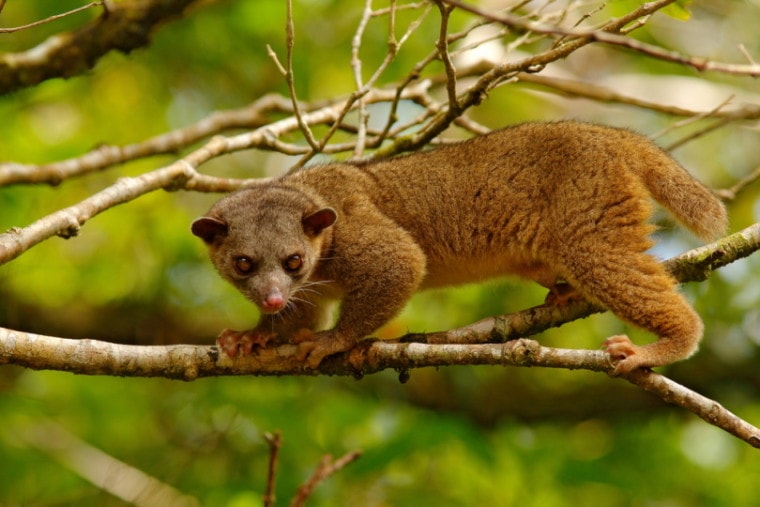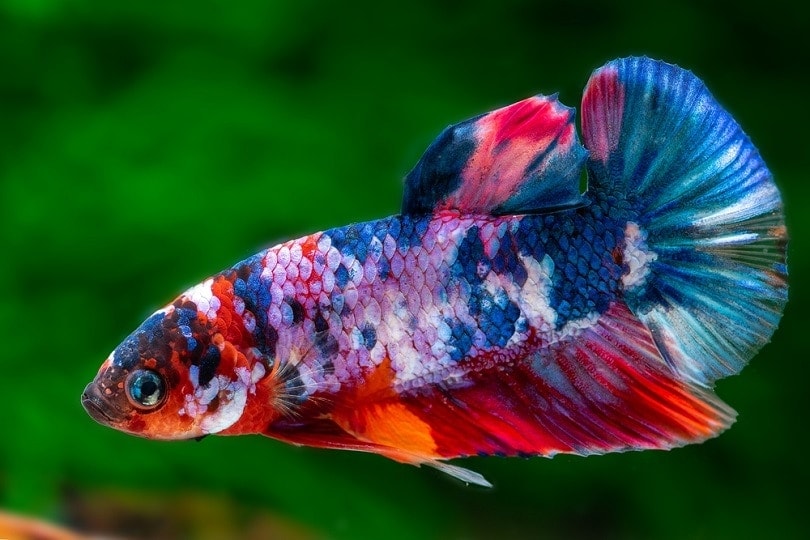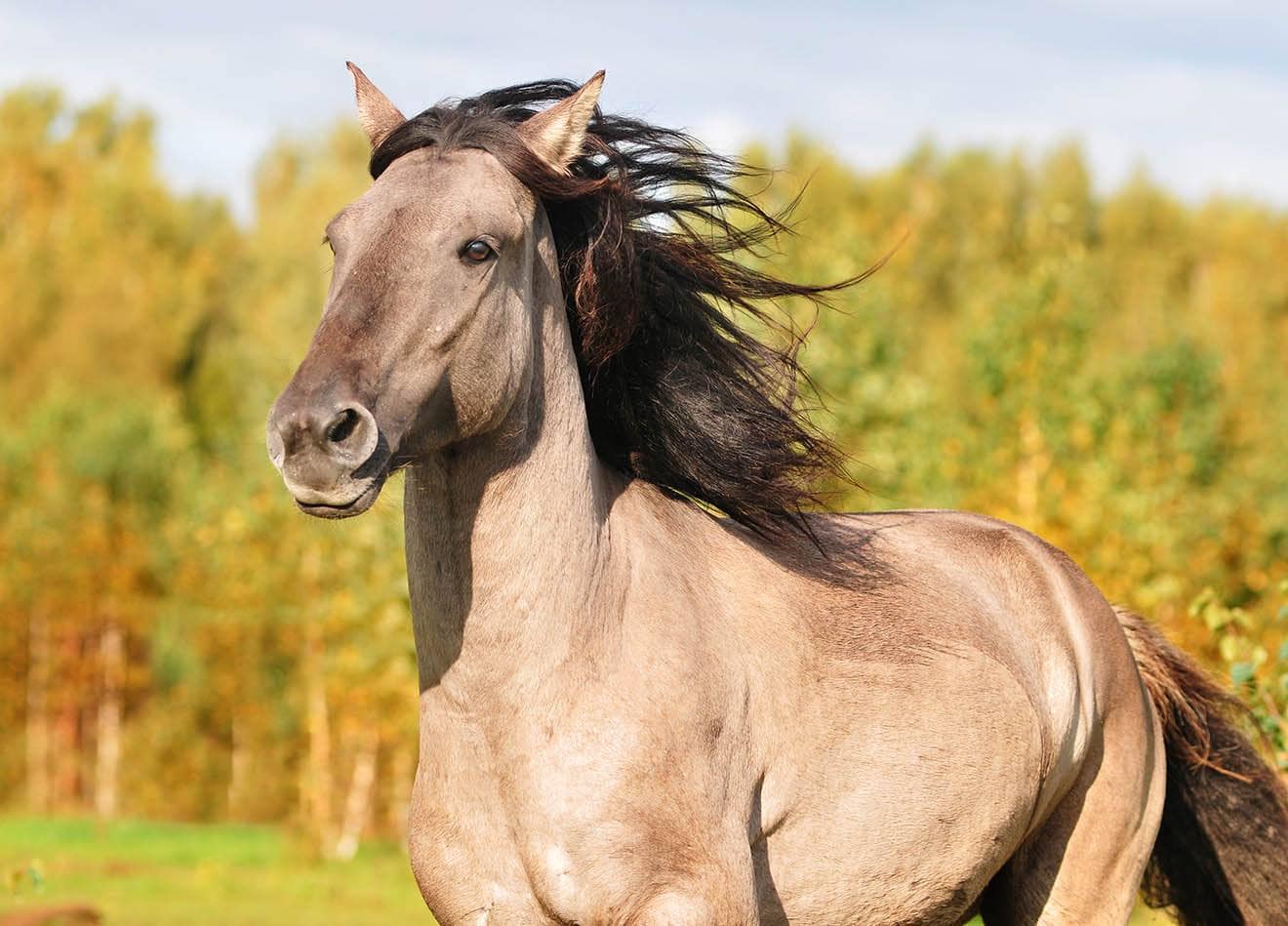
Disclaimer: Pet Keen does not endorse keeping kinkajous as pets.
Native to Central and South American rainforests, Kinkajous, also commonly known as Honey Bears, are small tree-dwelling mammals that have recently become popular in the exotic pet trade. These little animals are undoubtedly adorable, and when raised in captivity, they are known to be friendly and playful — for the most part. It’s natural to wonder whether such a cute little mammal would make a good pet, especially since they are steadily gaining in popularity in the pet trade. But do Kinkajous make good pets?
The answer is a resounding no. Kinkajous are wild animals, and even when they are raised in captivity, they are known to be easily startled and even aggressive toward their owners. They are also extremely difficult to house and have fairly complex dietary requirements.
In this article, we look at the reasons that Kinkajous do not make good pets.
All About Kinkajous

| Common names: | Kinkajou, Honey Bear |
| Scientific name: | Potos flavus |
| Average size: | 16 – 24 inches |
| Life expectancy: | 20 – 25 years, up to 40 years in captivity |
| Natural habitat: | Rainforest canopies of South America |
| Minimum enclosure: | 4 x 8 x 6 feet |
The 8 Reasons Kinkajous Do Not Make Good Pets
1. Housing
The recommended minimum enclosure size for a kinkajou is 4 feet wide, 8 feet long, and 6 feet tall, although even this is considerably small for a wild, tree-dwelling animal. Kinkajous are active and high-energy animals, and an enclosure double this size is more appropriate, and even then, they’ll need time outside of it too. Unless you have a large backyard, this is difficult for most people to provide.

2. Diet
As their common name “Honey Bear” suggests, Kinkajous love honey, which they naturally feed on in the wild. Kinkajous are omnivores with a highly varied diet in the wild, and this can be difficult to replicate in captivity. They feed on various insects, larvae, eggs, fruits, leaves, and flowers in the wild. Since there are currently no commercial foods available for these animals, it can be difficult to make sure they are getting the nutrition that they require.
3. Expense
Kinkajous are often captive bred, which thankfully prevents them from being taken out of the wild. Still, this does not lower their cost much, and purchasing a baby will cost you $2,500–$3,000 or more. Many people do not understand the massive responsibility of owning one of these animals and put them up for adoption, but this is in itself problematic because these animals are difficult to rehome.
On top of the purchase price, you’ll also need to consider vet bills and the animal’s complex feeding, which is also not cheap.

4. They’re nocturnal
Kinkajous sleep for most of the day and are typically awake all night. This means you’ll have little time to interact with and care for them other than early evening. They are also notoriously noisy. Their almost constant barking and screeching will likely keep you (and your neighbors) awake most of the night.
5. Intelligence
Intelligence is usually a wonderful trait in most pets, but with kinkajous, it can quickly become problematic. These animals are highly intelligent (some compare their IQ with that of a 4- or 5-year-old child), and when outside of their cage, they can easily get into cupboards, onto shelves, and even open doors. Make sure their cage is securely locked because they can easily open it if they choose! This intelligence also comes with a natural independence, making them almost impossible to train. Once they have escaped or have something that they shouldn’t in their possession, it can be almost impossible to change their mind about it.

6. Aggression
Since kinkajous are so difficult to train, they are notoriously unpredictable. They are known to bite for seemingly small reasons. Frustration, overstimulation, or even just a small change in diet may cause them to bite, and these bites can be rather nasty. Many owners say that it’s not a case of if your kinkajou will bite you, but when. They can easily cause injury when biting, including damaged nerves and infections, and they tend to latch on and not let go. Again, this biting can come seemingly out of nowhere, even if you’ve had your kinkajou for many years.
Kinkajous claws are also sharp, and being scratched is almost a certainty because you’ll need to groom them and clean their cage.
7. They’re messy and destructive
Kinkajous create a ton of mess in their cage, and you’ll need to spot-clean their cage once a day and deep-clean it at least once a week. Also, they can end up with food and waste in their fur and need regular grooming and bathing, as well as regular nail clipping to prevent scratches. This is a massive responsibility that will take up a ton of your time.
Kinkajous are also notoriously destructive and will make a quick mess of everything in their cage. Should they get out of their cage, they will chew things, relieve themselves everywhere, knock furniture over, scratch things, and break almost anything that they can find.

8. Long lifespan
Not only are kinkajous a massive responsibility, but they are a responsibility that you’ll need to keep up with for 20–25 years. Some kinkajous can even live for up to 40 years in captivity. Also, owning kinkajous is illegal in many states, and this can change at any time in the state that you live in during the long lifespan of your kinkajou. This would result in a painful and potentially highly stressful relocation for your pet.
Conclusion
With the right owner who has a ton of patience, dedication, and time, it is possible to keep a kinkajou as a pet, but this is rare. For the most part, these animals are simply not suitable as pets, and we highly advise against keeping pet kinkajous. Keeping them is also illegal in many states in the U.S. Although these animals are certainly interesting, adorable, and endlessly fascinating to observe, they should stay in the wild where they belong.
See also:
Featured Image Credit: Ondrej Prosicky, Shutterstock








